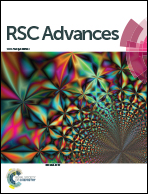Yttria stabilized zirconia microtubes for microfluidics under extreme conditions
Abstract
While the popularity of the usage of room temperature microfluidic systems is booming in different technologies such as bio-technology, micro-scale chemistry, micro-printing and many others, systems applicable under high temperature and pressure are still remarkably under-developed. The main drawback of the existing systems is the inadequate quality of the available construction materials. In this work, extrusion of metal-oxo-alkoxide sol–gel precursors through the nozzle is utilized to produce the liquid thread that is allowed to self-transform into ceramic microtubes by a chemical curing process. The focus is on YSZ (8% Y2O3 stabilized ZrO2), which exhibits a stable 100% tetragonal phase nanocrystalline structure up to 1000 °C. These tubes have excellent mechanical characteristics and can withstand 1000 atm pressure inside the tubes. Owing to these and other physical, chemical and mechanical properties, there are many potential applications for these tubes, one example being that the high optical quality of the YSZ tubes could be useful for guiding of light. Ionic conductivity with no electronic component makes these tubes suitable for ionic membrane applications like solid oxide fuel cells (SOFCs) or corresponding gas sensors. Finally, we demonstrate a single-tube-based miniature plasma jet device potentially applicable as an ion source for local surface treatment or possibly as a micro plasma propulsion device for space applications.


 Please wait while we load your content...
Please wait while we load your content...